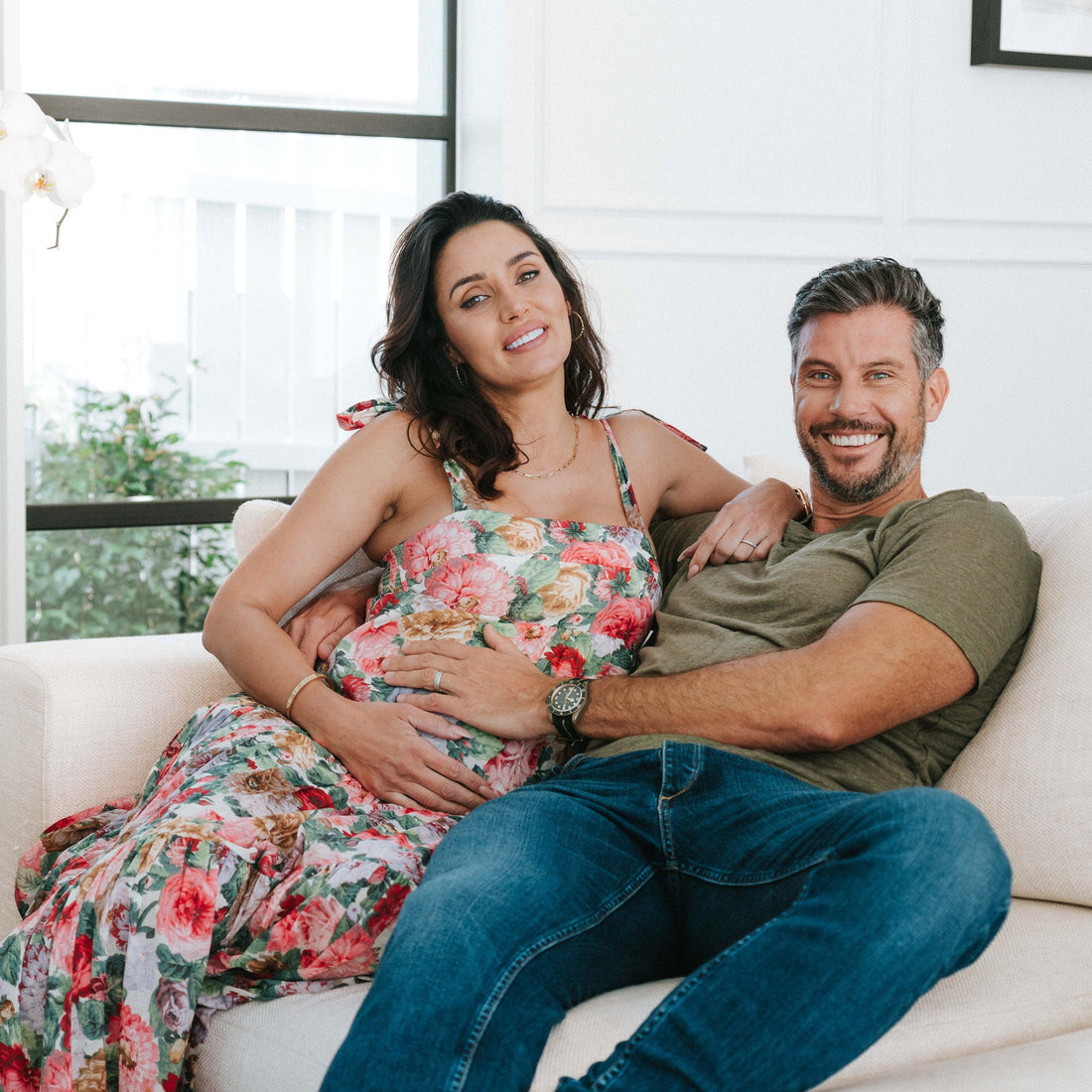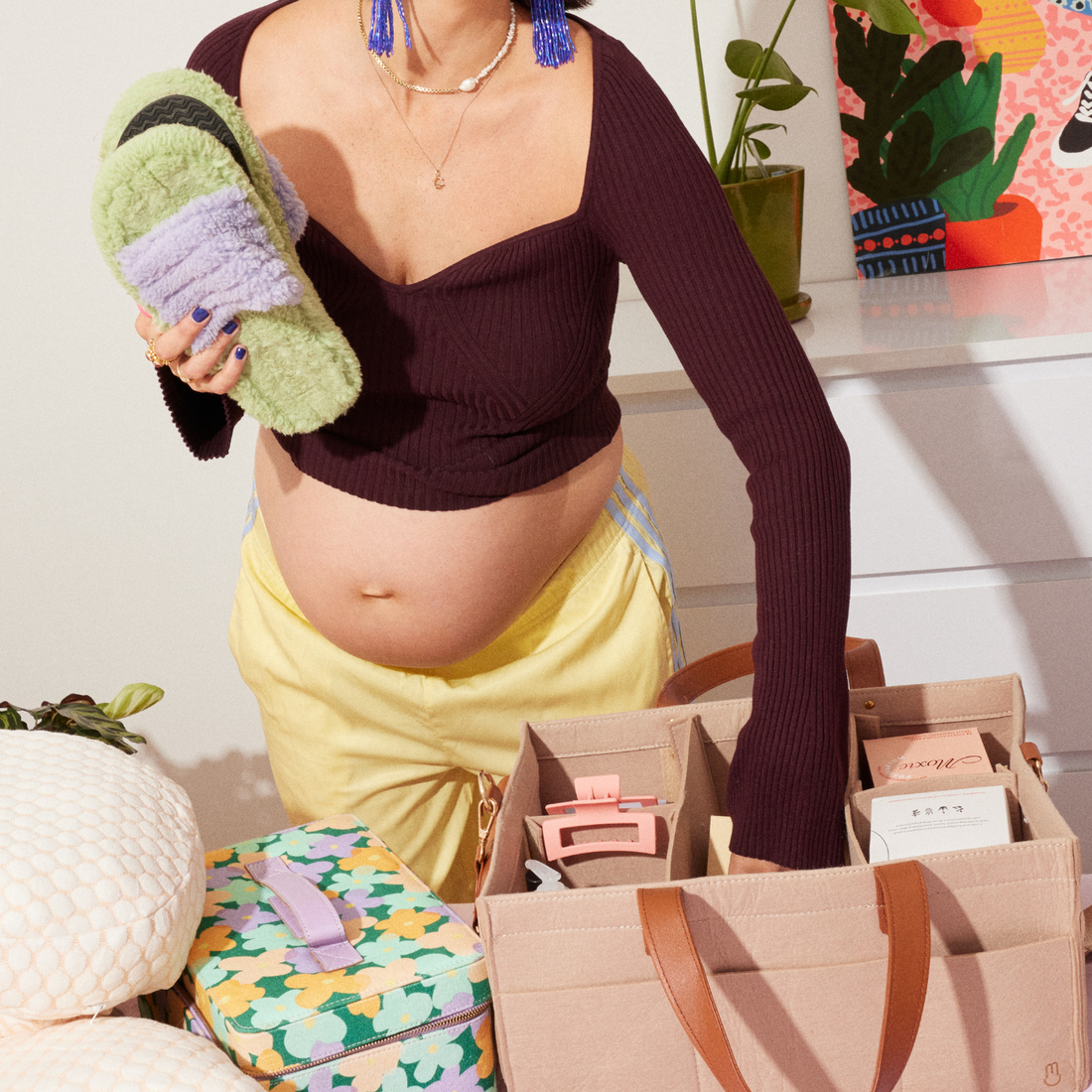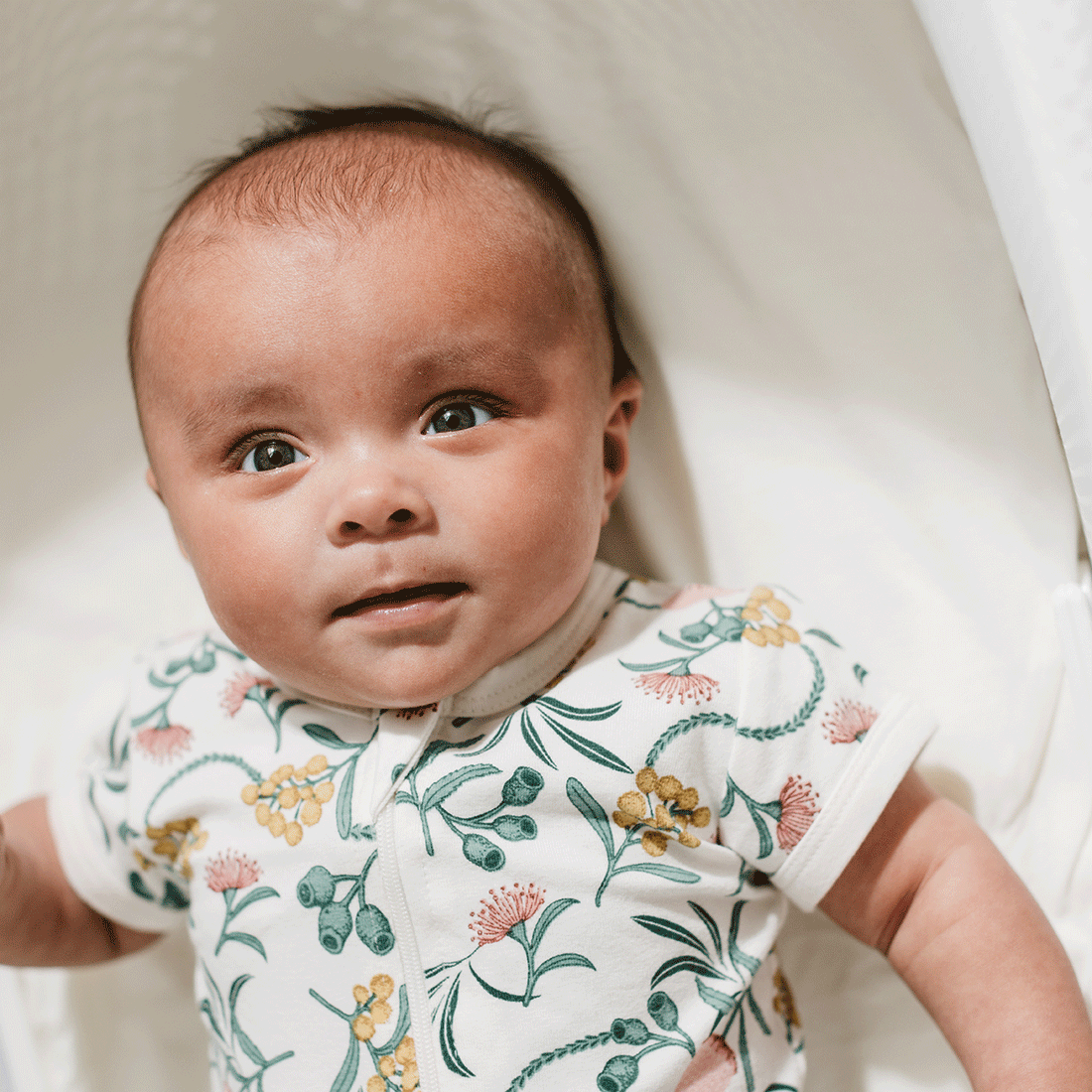Your A-Z for pregnancy, birth and parenting.
A
Amniotic fluid - the liquid that surrounds a baby in the uterus also known as ‘waters’.
Artificial Rupture of Membranes (ARM) - also known as breaking of waters, is a form of labour induction. A small instrument with a hook (much like a knitting needle) is placed inside your vagina in this procedure. Your membranes are then punctured to help bring on labour.
Amniotic sac - the sac around the baby inside the uterus.
Assisted birth - birth whereby forceps or a ventouse (vacuum) is used to deliver your baby.
Antenatal - a term referred to as ‘before birth.’
Antenatal expressing - is the collection of colostrum (first milk) during pregnancy.
Active labour - when labour is established. There is a distinctive contraction pattern every three, four, five minutes lasting 60-90 secs during this phase. Cervical dilation is approximately 6 –10cm and there is an intense tightening sensation in the back, abdomen legs and pelvis region.
B
Breech baby - a breech baby is where a baby is positioned bottom-down and head up late in pregnancy.
Braxton Hicks - often referred to as false labour, where there is tightening of the uterus (womb) that may feel like a contraction.
Birth mapping - a process by which a birthing person writes a personalised map of their birth that will be used by their support team care providers. This map includes all scenarios.
Balloon catheter - a type of induction of labour whereby a thin tube called a catheter, with a balloon on the end, is inserted into your cervix and the balloon is then inflated with water. This is used to apply pressure to your cervix to encourage it to open it, preparing it for the next phase of labour.
Bloody show - when a small amount of blood and mucus is released from the vagina indicating that the cervix is starting to soften and thin (efface). This is a sign that labour is coming.
C
Caesarean section - is a procedure where an incision is made in the abdomen and uterus and then the baby is pulled out to be birthed. Sometimes referred to as a ‘belly birth’.
Cardinal Movements - during birth your baby goes through a series of movements to try and position itself, just perfectly to allow for the smallest part of its body to be born first - these are called cardinal movements.
Crowning - is when the baby’s head is visible from the external vaginal opening in preparation for birth.
Contraction - a tightening sensation of the uterus during labour that causes the woman’s cervix to stretch up and out to open and dilate.
Closing of the bones - traditional to South America, the closing the bones treatment happens shortly after birth. Traditionally, it involves using a shawl called a “Rebozo” to rock and articulate the hips, followed by a complex abdominal and pelvic girdle massage using a warming oil. It is then finalised by tightly wrapping the cloth around the birthing person's hips.
Colostrum - is the first milk you produce when starting breastfeeding. It is highly concentrated, full of protein and nutrient-dense. Colostrum looks thicker and more yellow than mature milk.
Contraction -tightening of the uterus during labour that causes the woman’s cervix to dilate.
Catecholamines - hormones produced by the adrenal glands. These are naturally released at transition and the bearing down phase of labour to bring the birthing person back to consciousness and increase energy.
Crisis of confidence - coined by Rhea Dempsy (Australian birth worker,) this is when the birthing person hits a pain barrier wall and feels like giving up. Physically this happens typically in conjunction when the birthing person is transitioning.
Cervix - The lower, narrow end of the uterus that forms a canal between the uterus and vagina. During birth, the cervix dilates (opens), softens (ripens) and thins (effaces).
D
Diastasis recti - the partial or complete separation of the abdominal muscles that sit in the midline of the body. This commonly occurs during pregnancy and birth to make space for a growing baby.
Dilate - the opening of the cervix.
E
Edema - very common in the third trimester of pregnancy, this is excess swelling and fluid in your ankles, feet, legs, hands and arms. This typically leaves the body shortly after birth.
Episiotomy - a surgical incision/cut made between your vaginal opening and the anus to make more room for the baby to come out.
Efface - a terminology used to describe the thinning of the cervix.
Endorphins - calming, pain relief hormones that work in a positive feedback loop with oxytocin.
External Cephalic Rotation (ECV) - is a procedure where experienced healthcare providers attempt to turn a healthy baby from the breech presentation by placing gentle pressure on your abdomen with their hands and moving the baby to an engaged birthing position.
Epidural - a spinal block that stops pain signals travelling from the spine to the brain. An anesthetic is administered in the spine during labour to dull all the sensory information, so the birthing person can no longer feel pain in the lower part of their body.
Entering the veil - term birth workers use for active labour.
Embodied Birth Education - a form of birth education that dispels fear in the birth space through evidence-based education and emotional unpacking. It asks the birthing person to embody pain rather than disassociate from it - through partner support, evidence-based education, breath work and physical movement.
Engorgement - usually occurs when a mother makes more milk than her baby drinks. This often is the case when your milk first comes in days after birth, if you miss/skip a feed, or the baby doesn't properly drain your breast after a feed. Engorgement can happen if you are weaning also.
F
Forceps - a type of assisted vaginal delivery. Forceps are an instrument shaped like a pair of large spoons applied to the baby's head and help guide the baby out of the birth canal.
Fetal Heart Rate Monitoring - checking the condition of your fetus’s heart rate during labour and delivery.
Fontanelles - these are the soft spots where your baby’s skull bones haven’t fused to allow the skull to compress during childbirth.
Full-term - a pregnancy that reaches (37–42 weeks gestation).
G
Gestational diabetes - a condition that develops during pregnancy when the birthing person's blood sugar levels become too high because of inadequate insulin levels. This condition usually disappears after birth.
Golden Hour - the hour after birth. This period is used to self-regulate, stabilise heartbeat, body temperature and breathing for both baby and parent. During this time, parents typically have skin to skin with their new baby.
Group B Strep Test - a swab your vagina to check for this bacteria. This is performed in your final trimester and is optional.
Geriatric pregnancy - when a birthing person is having their baby at the age of 35 or older.
H
Heel prick - between 48 and 72 hours after your baby is born your health care provider will ask to take a blood sample by pricking your baby’s heel. A few drops are collected on a piece of card to test for: phenylketonuria, hypothyroidism and cystic fibrosis.
Hyperemesis gravidarum - sometimes referred to as HG is a severe form of morning sickness, with excessive pregnancy-related nausea and/or vomiting that prevents adequate intake of food and fluids. This can last through part or entire pregnancy and is not just experienced in the morning.
Homebirth - where a child is born at home.
Hormone Drop - The change in hormones after birth is the equivalent of going from taking 100 birth control pills a day to 0 by day three postpartum. It’s the largest hormone shift in the shortest amount of time in any human life.
Hypnobirthing - a form of birth education that helps prepare the birthing person for birth. The method was created by Marie F. Mongan a highly regarded hypnotherapist and Harvard University Ford Foundation. It explores positive affirmations, suggestions, and visualisations to help relax a labouring body, guide her thoughts, and control their breathing.
HBAC - homebirth after caesarean.
Hemorrhoids - hemorrhoids are enlarged, bulging blood vessels in and around the anus and lower rectum. Depending on your delivery, these can happen after birth and during your pregnancy due to hormonal shifts in your digestion.
I
Induction of labour - is when doctors and midwives encourage the process of labour to start artificially. There are four ways to be induced: prostaglandin, a balloon catheter, artificially breaking the waters (ARM) and synthetic oxytocin.
IVF - In vitro fertilisation is a medical procedure that combines an egg with sperm in vitro. The ovum or ova is removed from the ovaries and sperm is then fertilised in a laboratory and then planted inside the birthing person.
J
K
L
Landbirth - where a child is born on land
Lactation counsellor - is someone who is a trained volunteer who offers breastfeeding information to provide breastfeeding support. They are generally mothers and have experienced breastfeeding first hand.
Lanugo - the downy, fine hair that covers the body of newborns in utero. Found everywhere minus the palms, lips, and soles of the feet. Developed in the fourth month of pregnancy this hair usually sheds before birth but will be present in preterm babies
Lactation consultant - someone who specialises in supporting breastfeeding issues. They are health professionals whose certification has been recognised by the International Board Certified Lactation Consultant (IBCLC). They work in hospitals and child health services or in private practice.
M
Matrescence - is the physical, emotional, hormonal and social transition and journey where person becomes a mother. Sometimes referred to as ‘birth of a mother’.
Mermaid birth (en caul birth) - Also known as a ‘veiled birth’ an en caul birth is when the baby is delivered inside an intact amniotic sac. Many cultures believe due to its rarity that it is a sign of good luck, while others feel that being born “in a veil” means the baby will be protected or achieve greatness in their lifetime.
Morphine - is a pain relief drug (often offered in labour) working directly on the opioid receptors in the nervous system. This drug interrupts nerves signalling pain between the brain and the body.
Mother roasting - a traditional postpartum massage is practised in parts of Asia after birth. Here, the mother is massaged with hot oil, wrapped and bound in muslin cloths and then burning moxa is burnt over her to help restore healing after birth.
Managed third stage - after your baby arrives, you have to birth your placenta. Your health care provider might provide you with a medication called Syntocinon to continue uterine contractions and reduce postpartum bleeding. This is known as a managed third stage. If you have a C-section, your health care provider will remove the placenta from your uterus during the procedure. You can also opt for a physiological third stage. This is when you allow the body to naturally contract and expel the placenta without medication.
Model of care - is how you choose to be cared for during your pregnancy and birth. This can look like Shared Care, Public Care, Private Care, Private Midwife, Homebirth or OB-GYN in Australia.
Melatonin - is a hormone that your brain produces to help with circadian rhythms and sleep. During labour, it works in tandem with oxytocin to keep contractions regular and the birthing person relaxed.
Meconium - baby’s first poo. It is sticky, thick, dark green poo made up of cells and protein and can happen moments after birth or in utero in late pregnancy.
Mucus plug - is a protective collection of mucus in the cervical canal. Losing a mucus plug during pregnancy can signify that labour is coming.
Multiple pregnancy - when a birthing person is carrying more than one baby
N
Nitrous oxide - often referred to as 'laughing gas', a colourless and odourless substance used in labour for pain relief.
Neonatal period - the time from a baby’s birth to four weeks of age.
NIPT test - non-invasive prenatal screening test (NIPT) (also known as the Harmony Test) is privatised blood test that looks at pieces of DNA from your pregnancy. These pieces are found in your blood by the time you are 10 weeks pregnant. By looking at these pieces of DNA, the test can decipher if there is an increased chance that your pregnancy may have a chromosome abnormality such as Down syndrome as well as the sex of the child.
O
Optimal fetal positioning - is a proactive birth preparation practice. It concerns creating balance and alignment in the soft tissues and pelvis to create as much space as possible for the baby to engage, descend and rotate in preparation for birth.
Oxytocin - the love drug. It is responsible for two main actions in birth and parenting: the contraction of the womb (uterus) during childbirth and lactation for breastfeeding.
OB-GYN - is a physician who cares for women and their babies during fertility, pregnancy and childbirth. OB is short for obstetrics and GYN is short for gynaecology.
P
Placenta previa - when the placenta hangs anatomically lower and covers the placenta.
Premature - when a baby arrived born before 37 weeks of gestation.
Placenta - developed during pregnancy in your uterus. This new organ provides oxygen and nutrients to your growing baby and removes waste products from your baby's blood.
Prostaglandins - help kick start labour and ripen the cervix. Unlike other hormones, they aren’t released from a specific gland. Instead, the body has a number of tissues that can make prostaglandins.
Private Midwife - a private practising midwife who does not work at a hospital but for themselves or a small collective/clinic or birth centre. This model offers continuity of care where the birthing person engages with the same person during their entire pregnancy, birth and postpartum journey.
Public care - a model of care where you birth your child in the hospital zoned to your area. In the public hospital system, midwives look after women during pregnancy and birth and doctors only intervene if there are any complications.
Paediatrician – a doctor who has is a specialist in treating children
Pelvic Floor - a group of muscles responsible for holding your uterus, bladder and bowel.
Postnatal - a period after ‘after birth' relating to the baby.
Postpartum - a period after ‘after birth' relating to the mother.
Postpartum hemorrhage - when there is heavy bleeding after giving birth.
Perineum – the area between the vagina and anus.
Physicological birth - where a birthing person births through their vagina without assistance, drugs or interventions.
Posterior baby - a posterior baby has its back facing the mother's back in the occiput posterior position. It is sometimes referred to as ‘back to back or ‘the sunny-side-up position’.
Prolapse - occurs when one of your pelvic organs sags, bulges and or protrudes from your vagina. This happens commonly after birth is when the pelvic floor and supportive tissues surrounding the muscles are damaged, stretched or become too weak.
Preeclampsia - a condition that typically develops after 20 weeks of pregnancy whereby a birthing person experiences elevated blood pressure and the levels of protein in the urine.
Q
R
Reflux - when the contents of the stomach are brought back up (regurgitated). For new babies this is the excess bringing milk and can lead them to become unsettled.
Rebozo - a woven cloth made by indigenous weavers in Mexico. It is a cultural emblem and an artifact and passed down from mother to daughter and midwife to midwife.
Relaxin - released by the placenta in late pregnancy to ripen the cervix, relax and widen the pelvic region in preparation for birth.
S
Stretch and sweep - the passing a finger through the cervix and rotating the finger around. This can release hormones which may encourage labour to start. A stretch and sweep can cause discomfort and some vaginal bleeding. This is only done with your permission and your doctor or midwife will use sterile gloves and lubricant.
Syntocinon - synthesised (fake) oxytocin. This drug the body needs to go into labour naturally and is used during induction of labour through a vein attached to a drip. It is also used during the third managed stage of labour.
Shared Care - is a shared agreement between a GP and a birthing hospital or other birth setting. You will see your GP for some pregnancy appointments, and you also have appointments at the hospital in early and later pregnancy.
Spontaneous labour - the natural way the body goes into labour without the use of medical intervention.
T
Transitioning - the period where the body shifts from opening the cervix to the beginning of the baby’s descent.
Trimester - how time is calculated during pregnancy. Each stage is marked by different phases of fetal development in three-month blocks.
Tongue-tie - a condition that restricts the tongue's range of motion and affects how a child eats and speaks and breastfeeds. This is normally picked up at birth.
TENS machine - Transcutaneous electrical nerve stimulation (TENS) is used during labour to help with pain relief. It uses mild electrical pulses through the skin, via electrode pads, into the nerve fibres below.
Third and Fourth-degree tears - when the muscle surrounds the anus tears from the vagina opening. In most cases, these require general anesthesia and dissolvable stitches to help with the healing process.
U
Urinary incontinence — the loss of bladder control.
Uterus - the womb.
Umbilical cord - the cord that connects your baby to the placenta, allowing nutrients (vitamins and minerals) and oxygen to be carried from the mother to child.
V
Ventouse - commonly referred to as vacuum birth, is a type of assisted vaginal delivery. An instrument shaped like a plastic or metal cup is attached by a tube to a suction device to the baby's head by suction.
VBAC - vaginal birth after cesarean.
Vernix caseosa - a protective layer on your baby’s skin like looks like a white, cheese-like substance. This develops in the womb and some may appear on skin after birth.
Vaginal and perineal grazes - sometimes referred to as first degree tears are common if you have a vaginal birth and most likely won’t need stitches and will heal on their own.
W
Waterbirth - where a child is born in water.
















